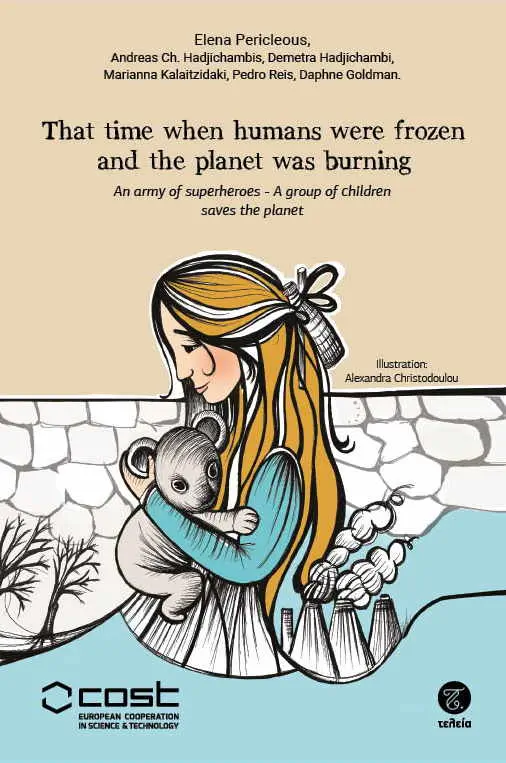Environmental Citizenship
For World Environment Day 2022 COST Action the European Network for Environmental Citizenship explains the main ideas for this innovative concept.
Today’s environmental challenges are characterised by complexity. We live in a digitalised environment, our biodiversity is impacted, we over-exploit our natural resources and these factors are considerably impacting the environment.
Environmental Citizenship requires new ways of thinking and acting. Being an active environmental citizen includes recognising the value of liveable environments for humans and nature, promoting conservation and restoration of resources, and supporting nature protection and biodiversity.

Environmental attitudes and behaviour characterises and influence our production and consumption choices and therefore affect largely our environmental impact.
More than 154 experts from 39 countries participating in the European Network for Environmental Citizenship (ENEC) conseptualise what environmental citizenship means today.
“Environmental Citizenship” is defined as the responsible pro-environmental behaviour of citizens who act and participate in society as agents of change in the private and public sphere, on a local, national, and global scale, through individual and collective actions, in the direction of solving contemporary environmental problems, preventing the creation of new environmental problems, achieving sustainability as well as developing a healthy relationship with nature.
Environmental Citizenship includes the practise of environmental rights and duties, as well as the identification of the underlying structural causes of environmental degradation and environmental problems and the development of the willingness and the competences for critical and active engagement and civic participation to address those structural causes and to act individually and collectively within democratic means, taking into account inter- and intra-generational justice (ENEC 2018a).

To try to define this key concept, the European Network for Environment Citizenship (ENEC) was launched in 2017 with the aim to improve understanding and assessment of environmental citizenship in European societies. Environmental Citizenship is a key factor in EU’s growth strategy and plays a crucial role in achieving environmental sustainability, green transition, circular economy, and a carbon neutral future. ENEC COST Action gathers 154 academic researchers and scientists from more than 88 universities and research institutions from 39 countries in a multi-national and multi-disciplinary approach.
ENEC has developed new concepts, methods, metric tools, and pedagogical approaches. The network also tries to improve the protection of our planet with Teachers Professional Development Guidelines and policy recommendations.

“Environmental Citizenship, and its novel conceptualisation, is a promising environmental innovation which can help us reach our goals for achieving environmental sustainability, green transition, circular economy, and a carbon neutral future.“
Dr Andreas HADJICHAMBIS, Action Chair.
The aim of this European network is to deliver reflection papers and strategic recommendations for the Education for Environmental Citizenship (EEC) that will empower a new generation of environmental citizens, capable of promoting the necessary environmental and social change for the benefit of our environment.
In this attempt, ENEC decided to go beyond the necessary scientific publications and developed a book for children and three animated videos, explaining in lay formats the main concepts and approaches.
That time when humans were frozen and the planet was burning
The Action’s children’s book ‘That time when humans were frozen and the planet was burning’ is to be shared with teachers and is available as open source to be downloaded for everyone. An army of superheroes – a group of children – take action and save our planet. A wonderful story of a group of children who act as environmental citizens to save our little blue planet from climate change. A group of children that implicate grandfathers and grandmothers and dogs and cats… And in the end? In the end, they make the change! A story that will excite, inspire, and mobilise children. A story that you will never forget!
The following animations presenting the urgent need for environmental citizenship as well as the EEC model explaining the main ideas for this innovative concept. Finally, the 3rd animation proposes a holistic, innovative, and integrated pedagogical approach that helps teachers to develop their educational interventions:
Environmental Education in times of environmental crisis
The Education for Environmental Citizenship (EEC) pedagogical approach
Education for Environmental Citizenship – The EEC model
Environmental Citizenship is a vehicle to achieve our common environmental goals for the green transition, green deal, and climate neutrality, for the benefit of our planet. In long-term, the increased active Environmental Citizenship will lead to diminished civil impacts (pressures) to the environment through more environmental friendly consumer choices and increased environmental protection due to increased environmental awareness and increased citizens’ participation and action.
The Action has conceptualised and framed the Environmental Citizenship and has developed a new theory (EEC), research paradigms, and metrics for assessing Environmental Citizenship. Good examples and best educational practices leading to pro-environmental attitudes, behaviour, and values have been highlighted and promoted. Policy measures and recommendations have been also proposed.
Further reading on Environmental Citizenship
Additional information
View the Action Website
View the Network Website

